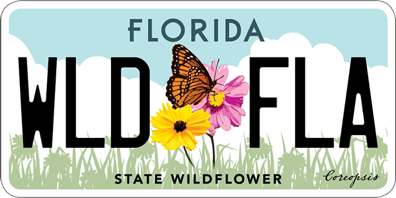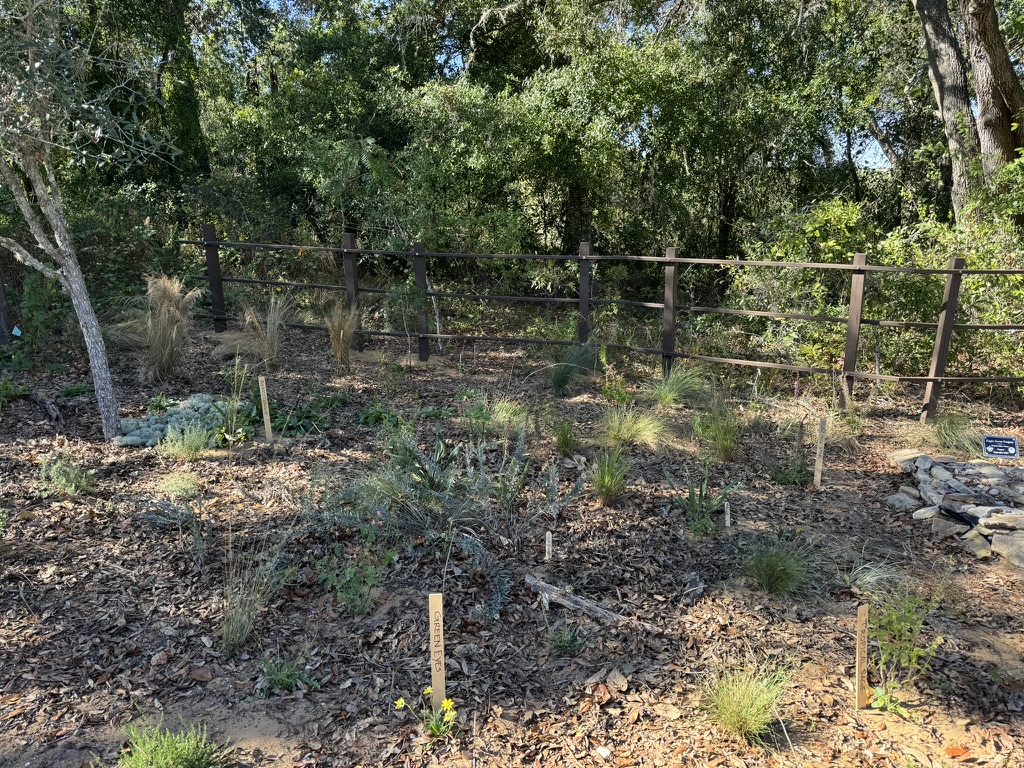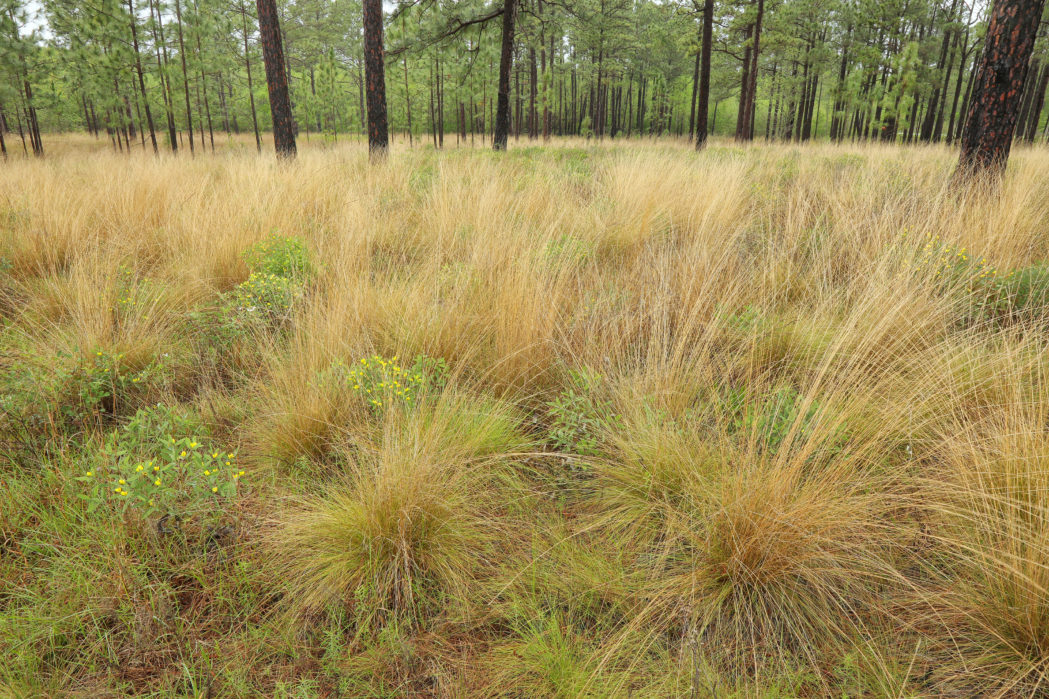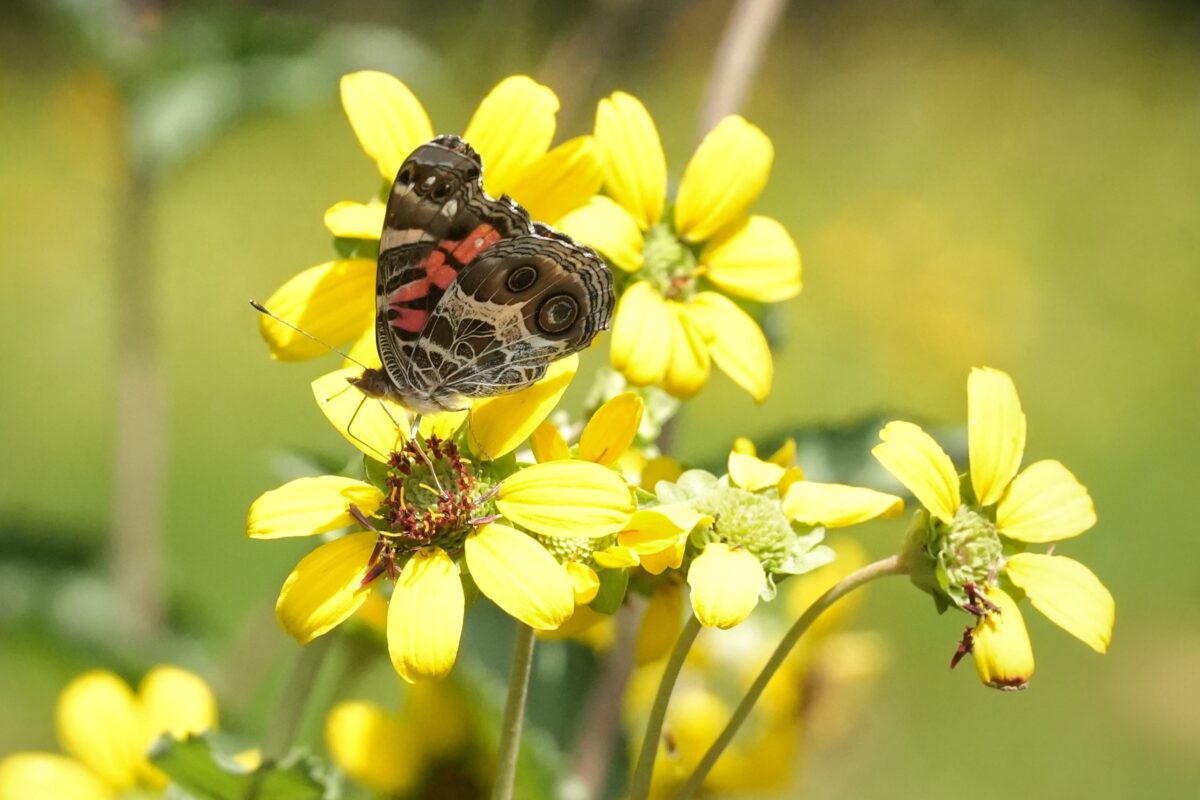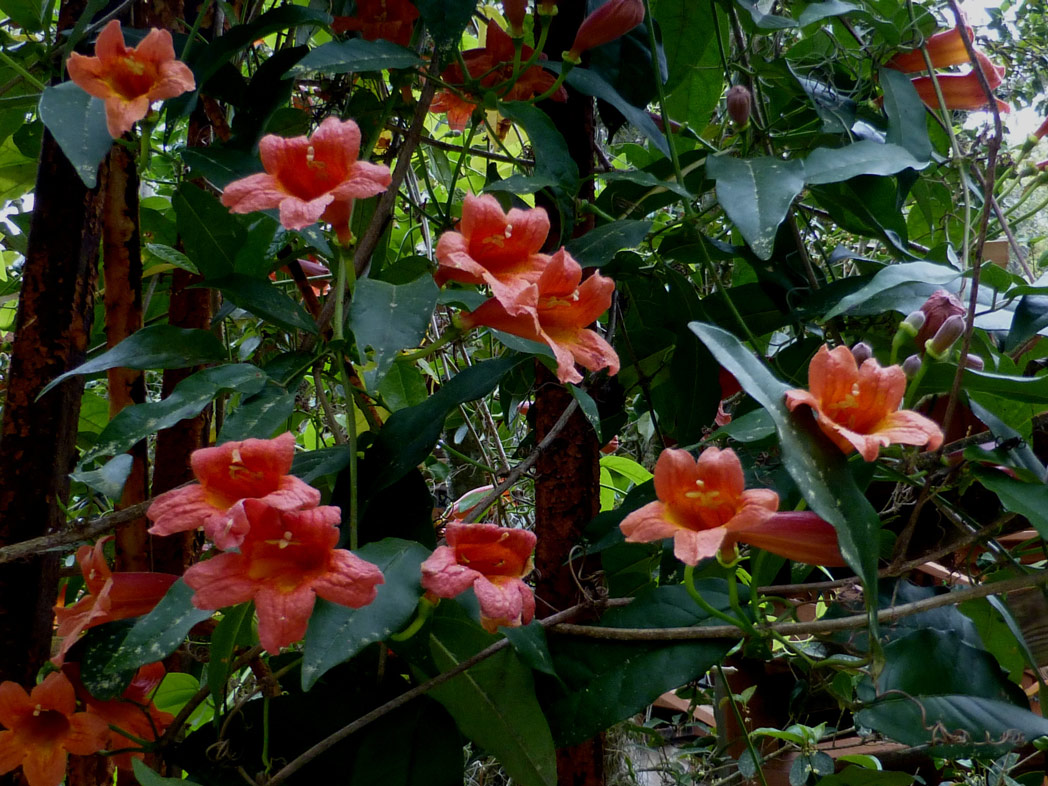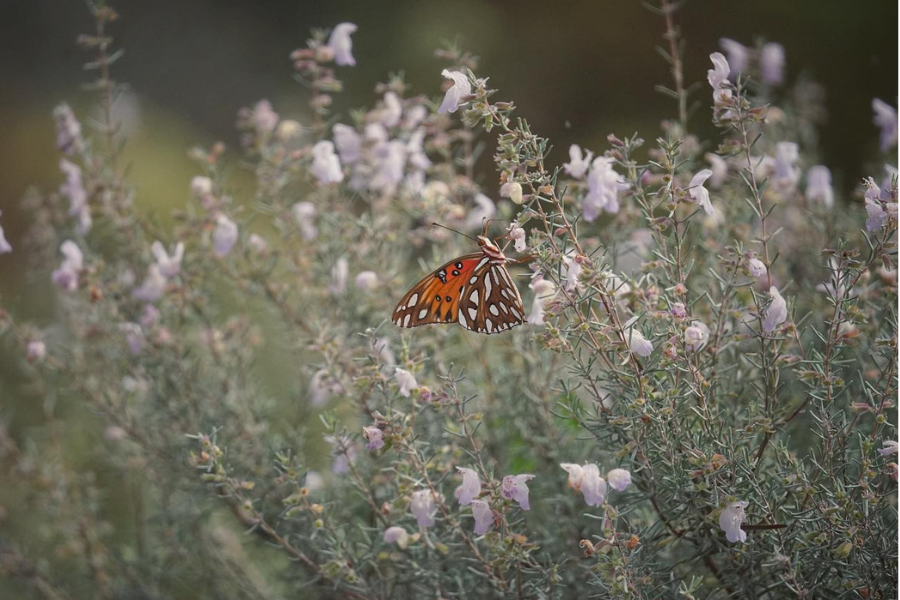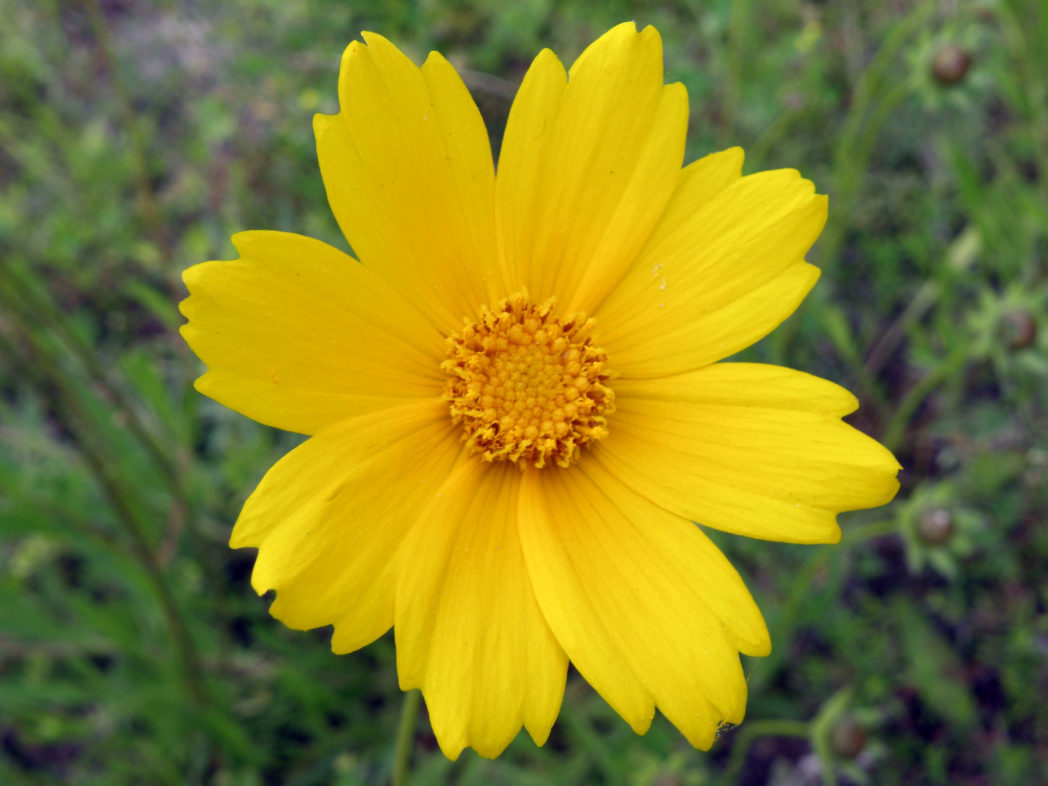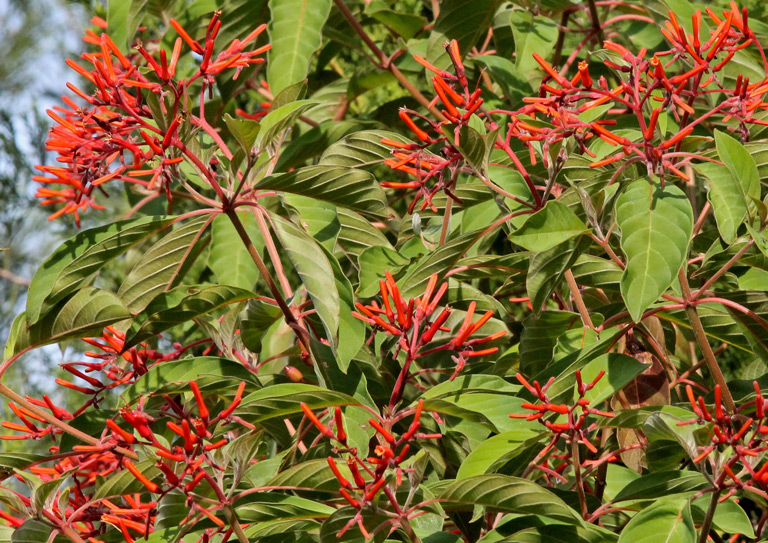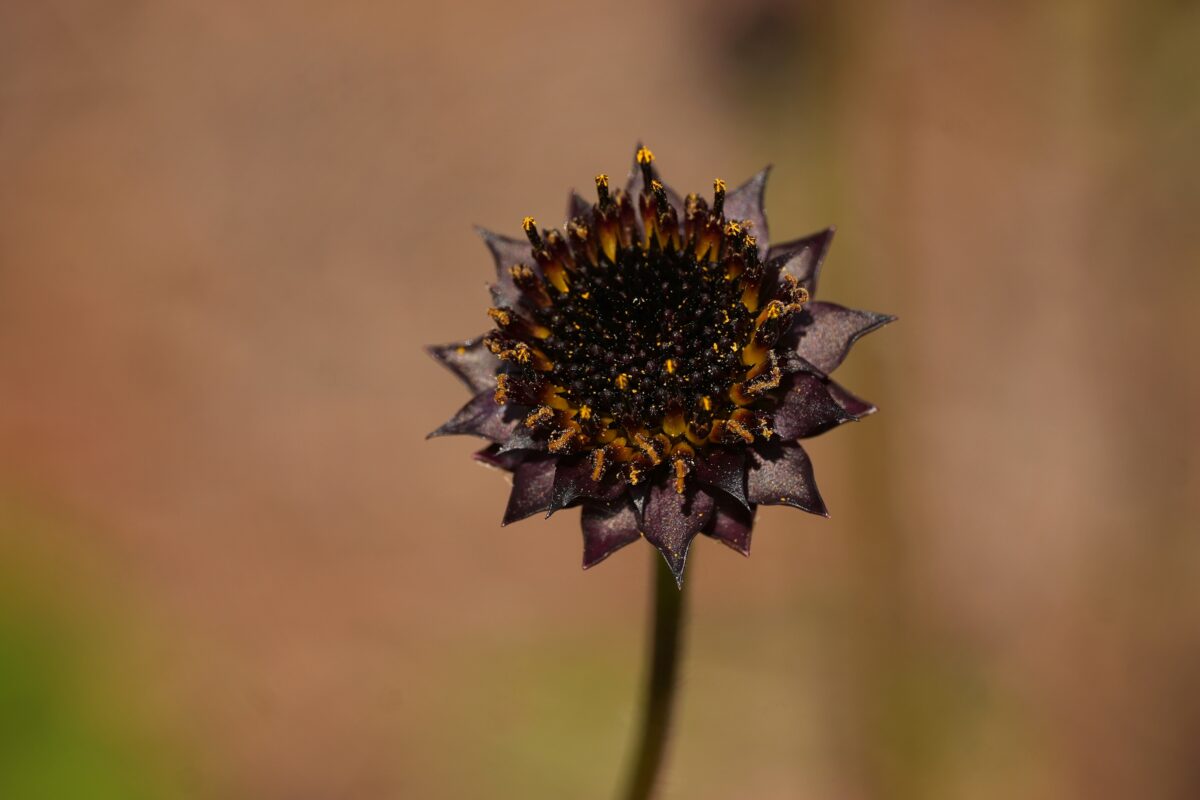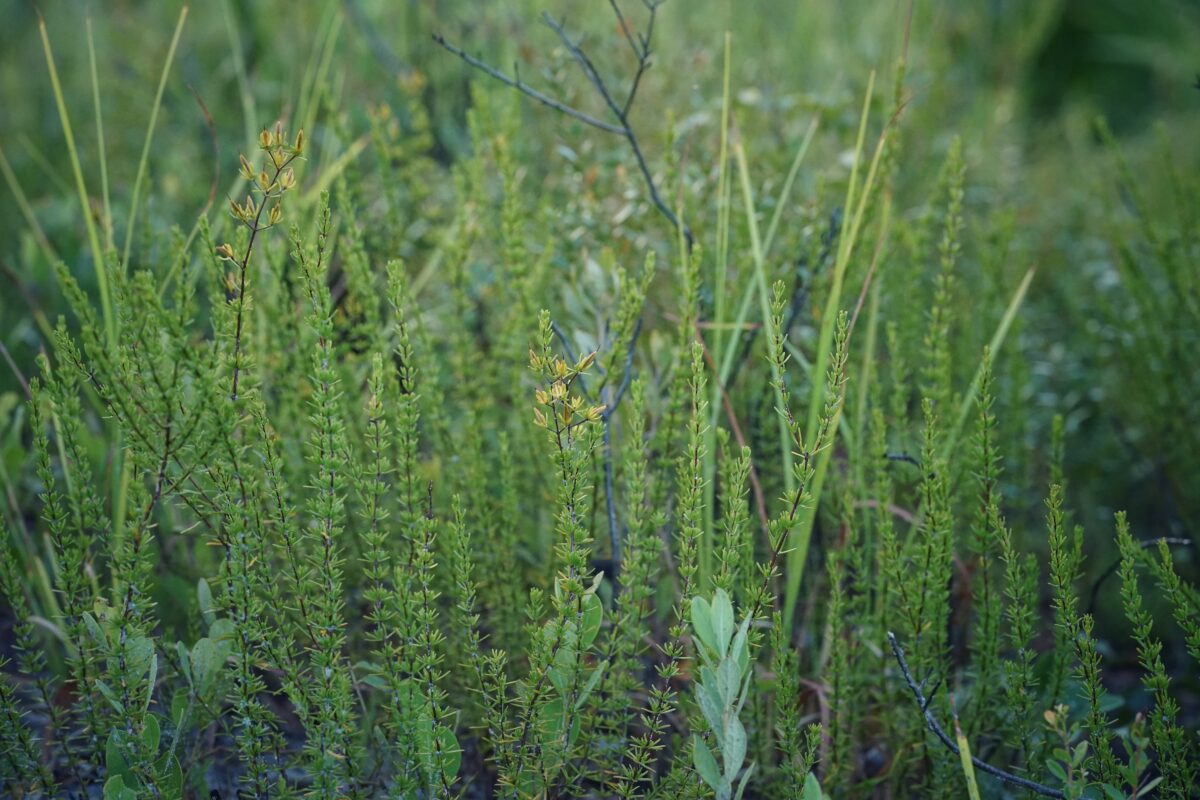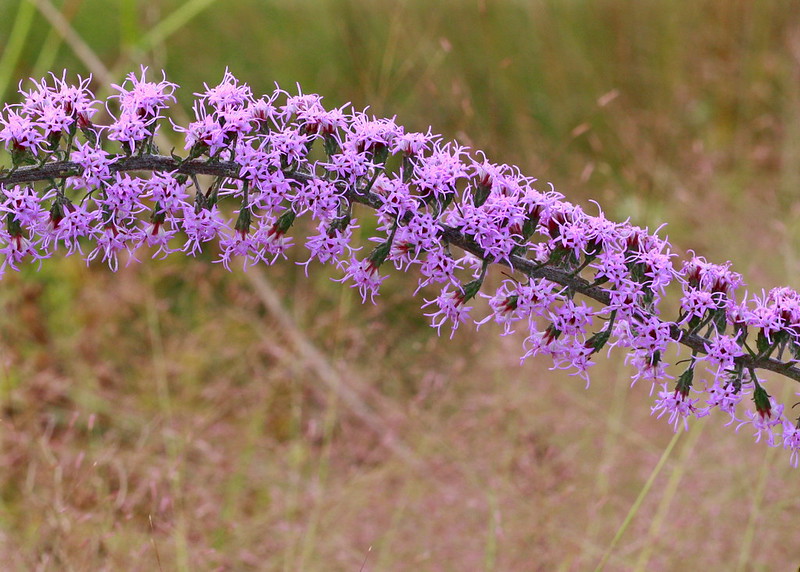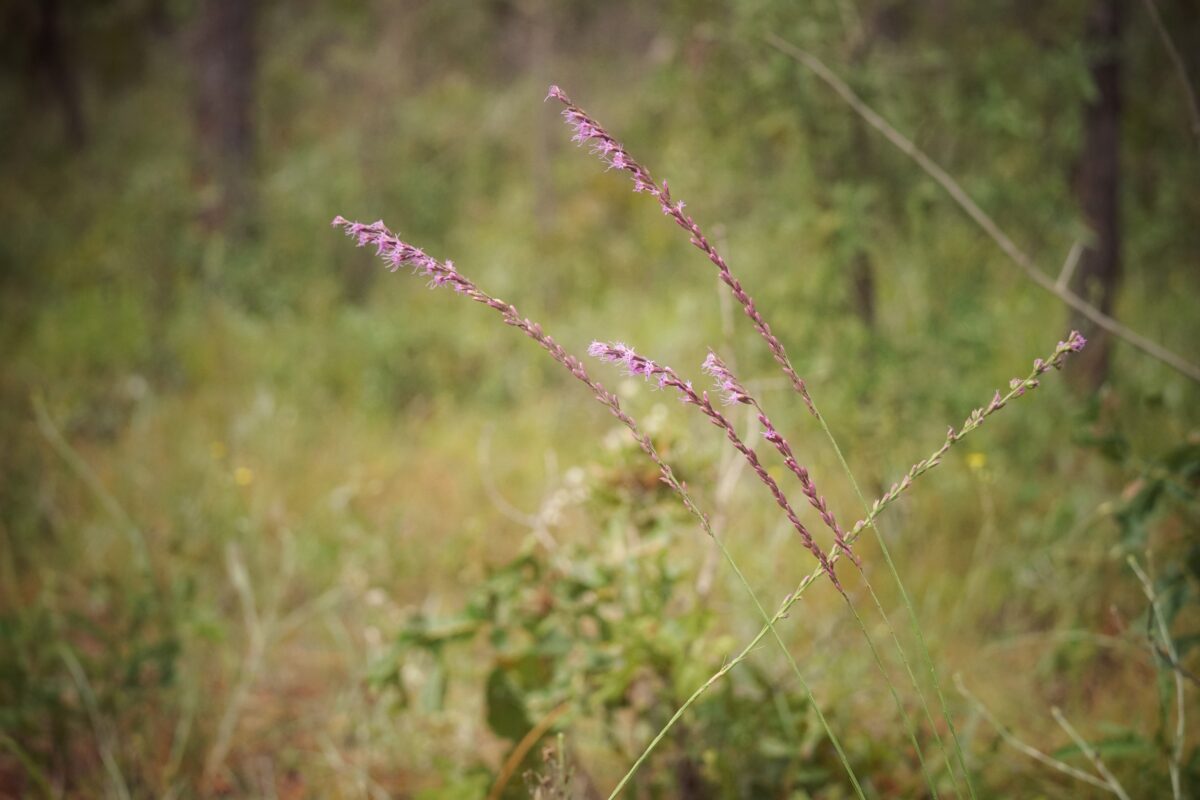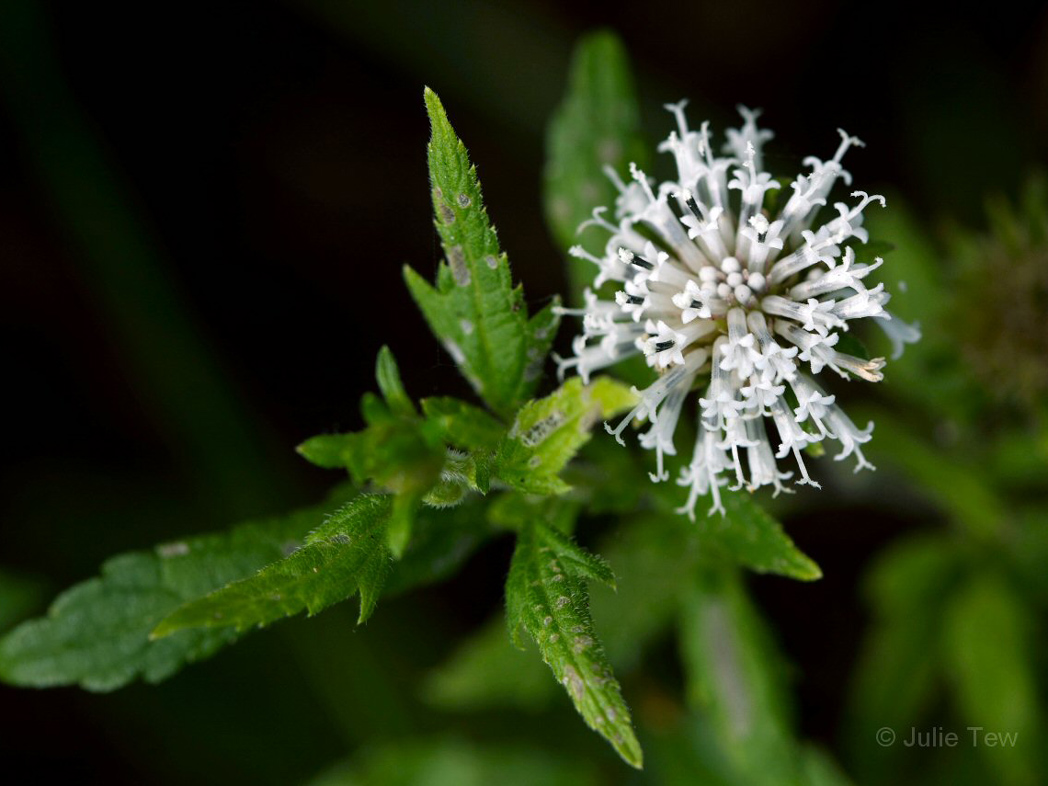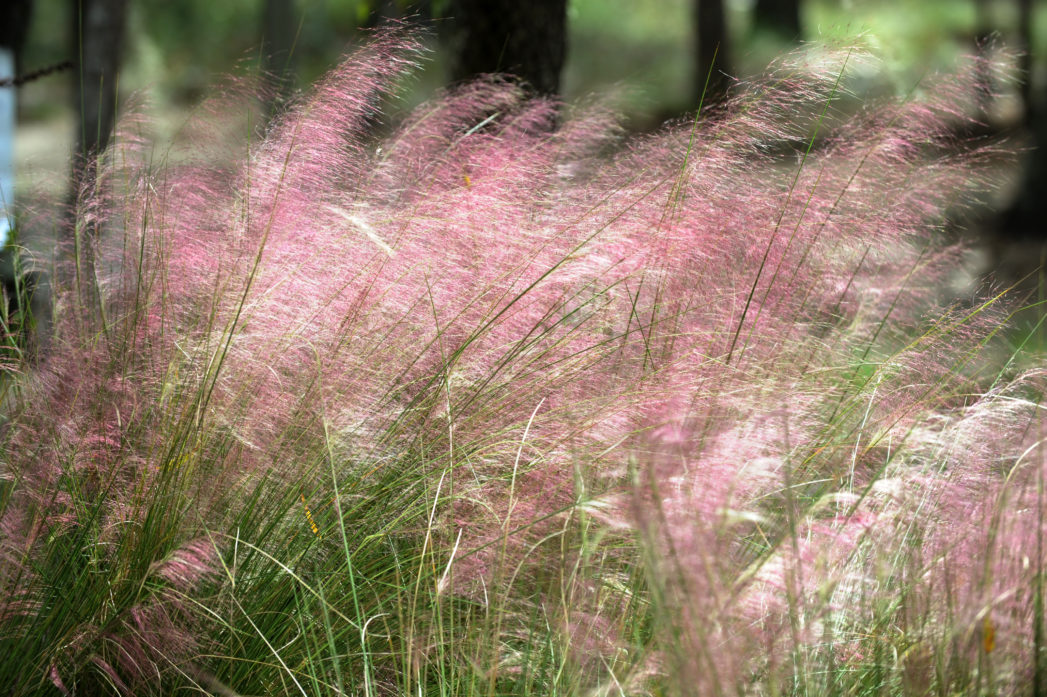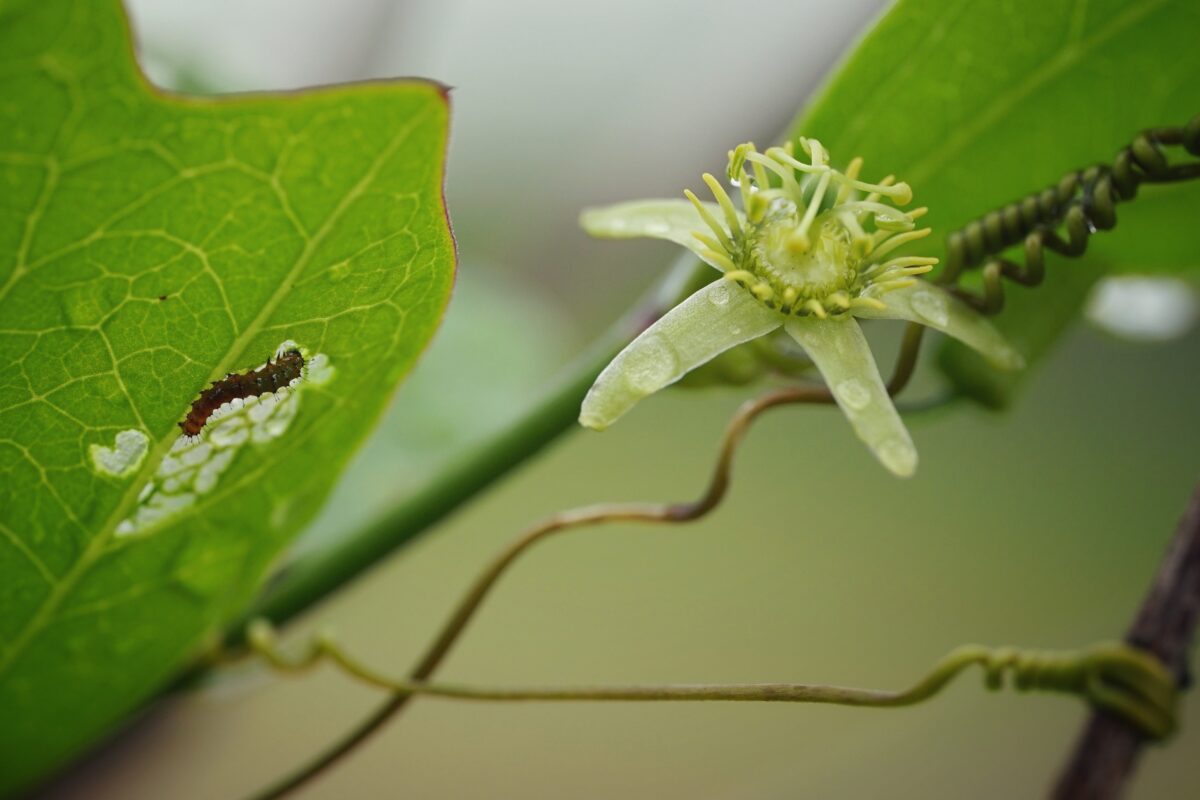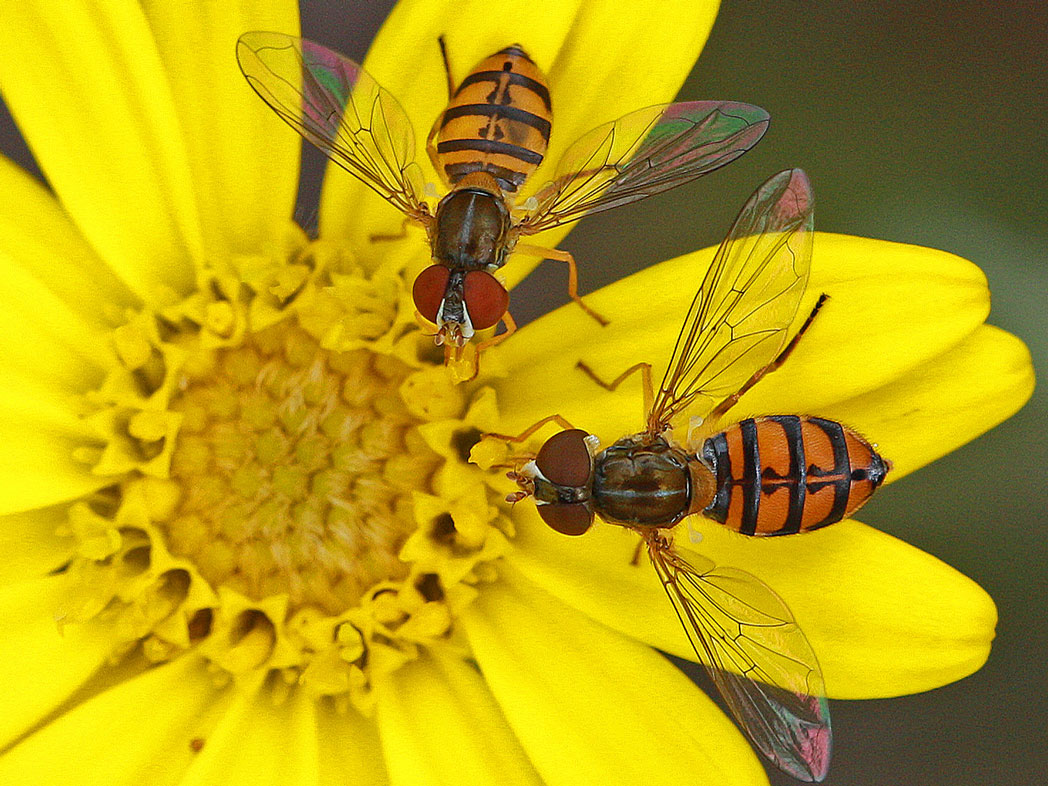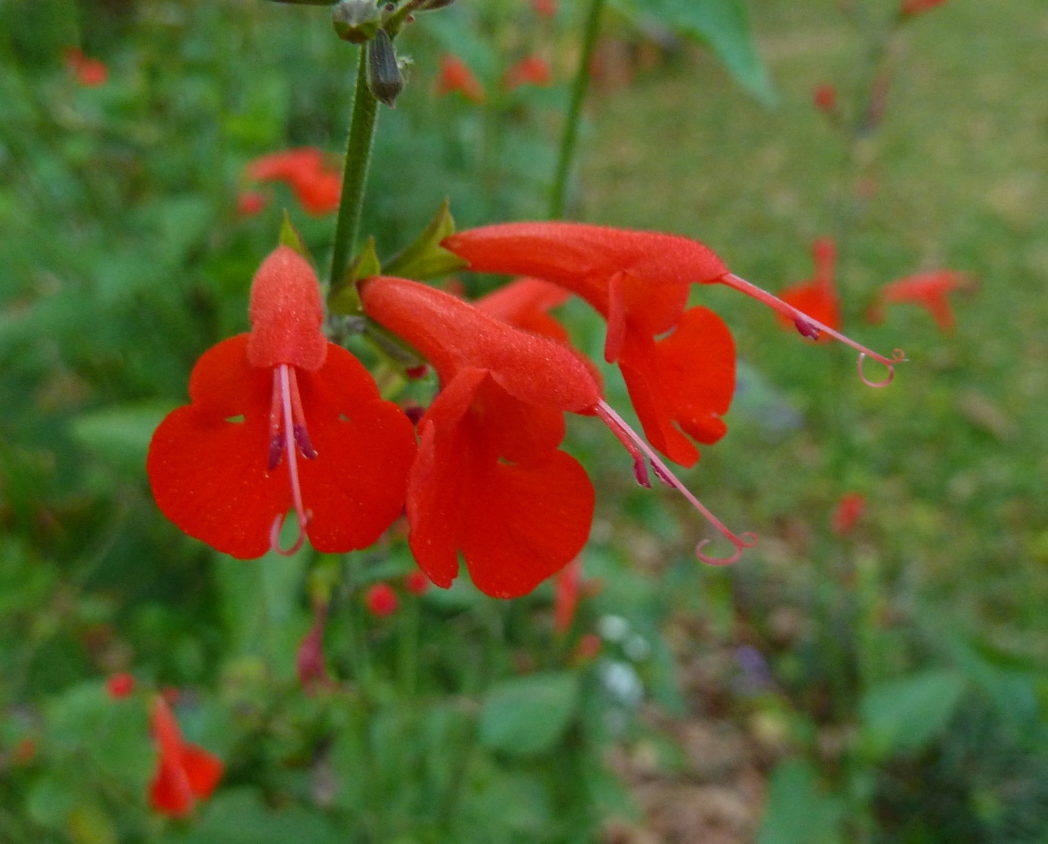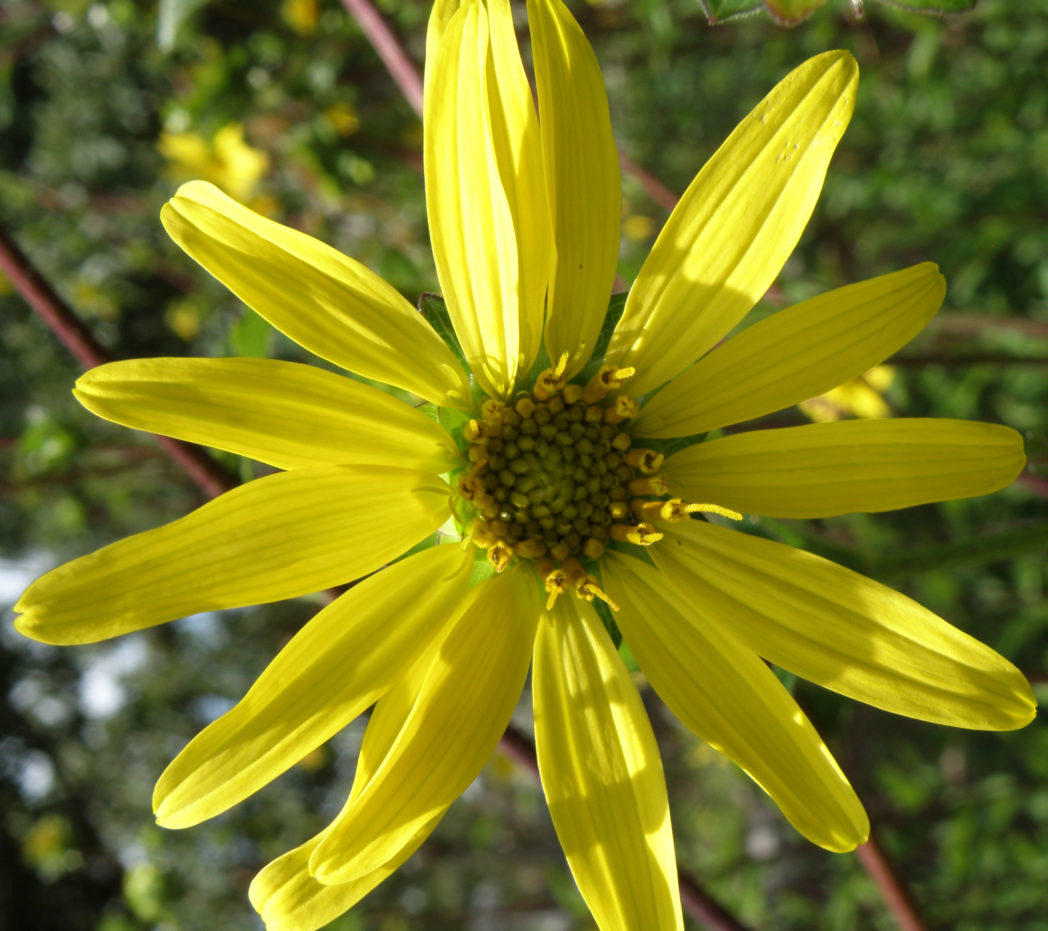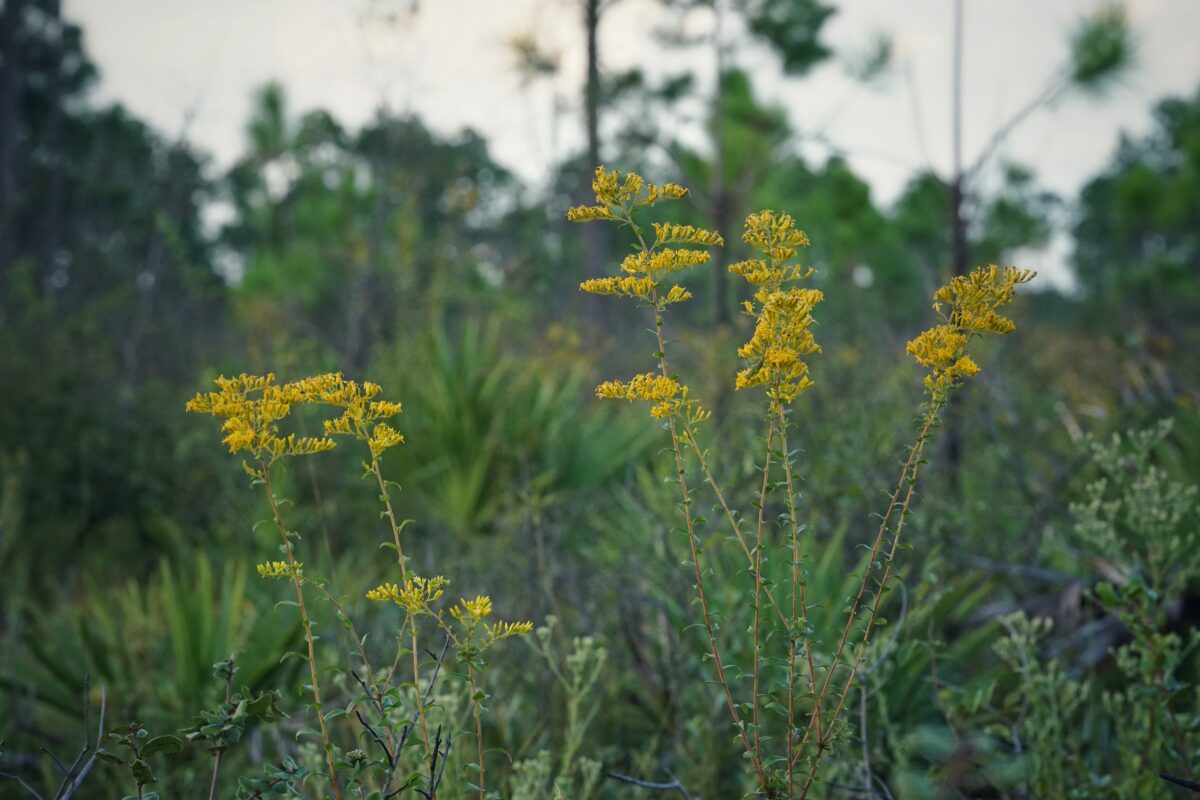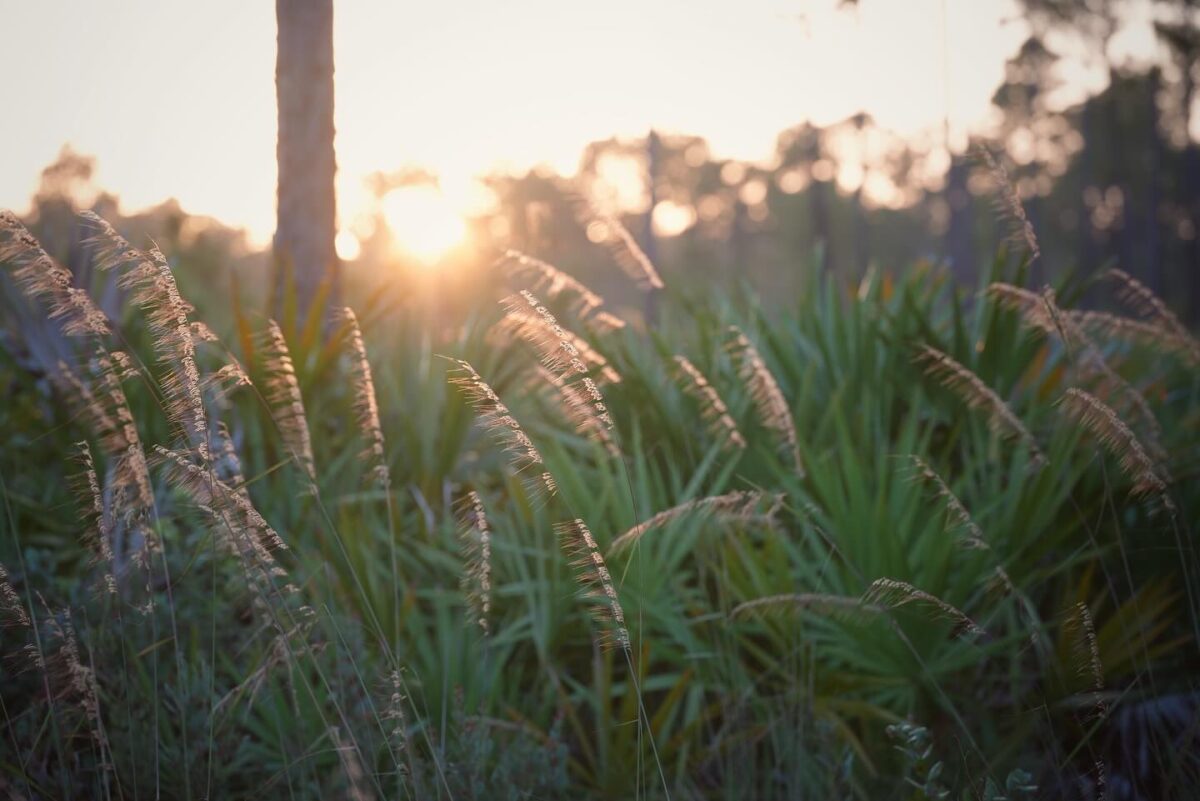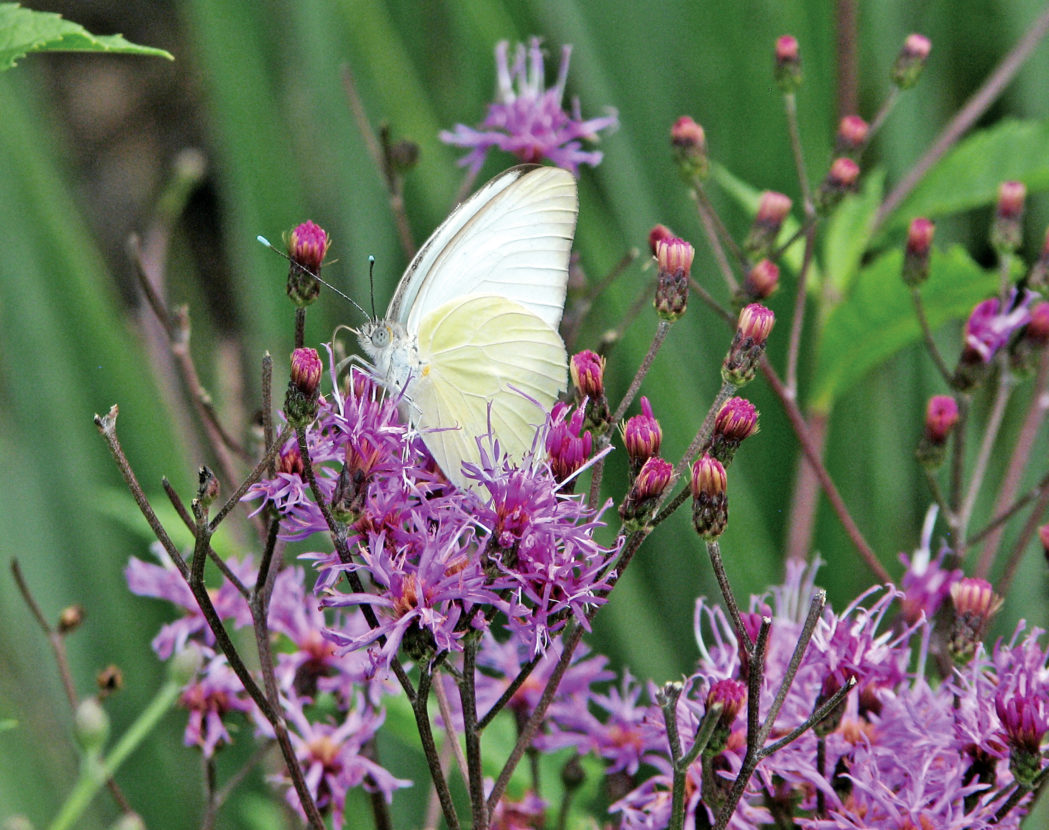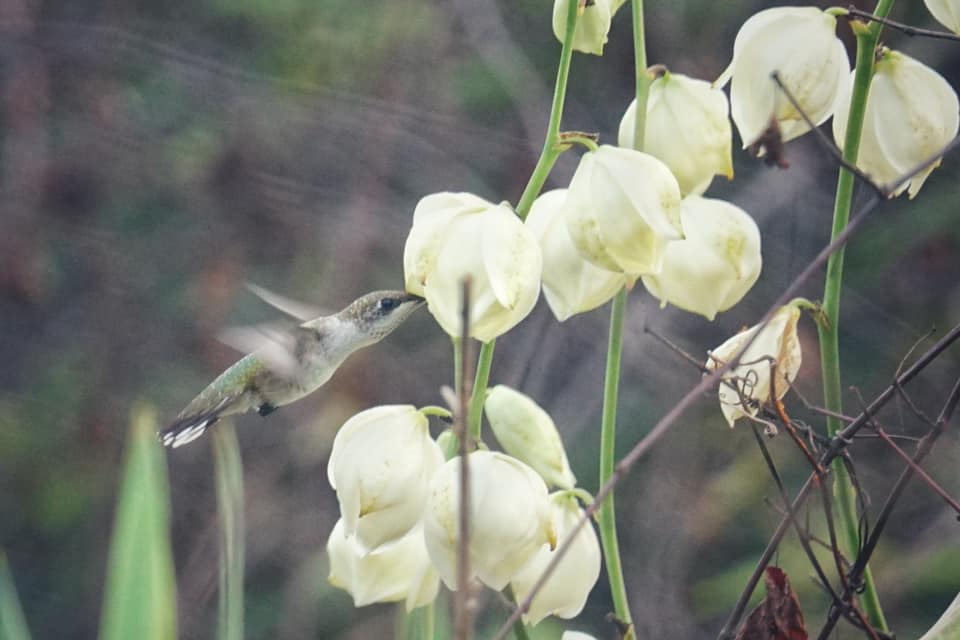Welcome to our native wildflower demonstration garden! The purpose of this garden is to promote the use of native plants for creating diverse landscapes which, in turn, promote wildlife diversity and ecological stability. We hope you enjoy learning more about the following Florida native wildflower species and are inspired to create a habitat oasis all your own! Thank you for visiting.
The garden was made possible by a grant from the Florida Wildflower Foundation.
The garden is located at Green Mountain Scenic Byway, 20700 County Rd 455, Minneola, FL 34715 (MAP).
Wiregrass (Aristida stricta) is a perennial bunchgrass found in scrub, pinelands and coastal uplands throughout much of Florida. It is is a primary food source for gopher tortoises.
Florida greeneyes (Berlandiera subacaulis) is an endemic wildflower found in Florida’s sandhills, pine flatwoods, mixed upland forests, and along dry roadsides. Their bright yellow flowers bloom in spring, attracting a…
Crossvine (Bignonia capreolata) puts on a spectacular spring display of orange tubular flowers. They are mainly pollinated by hummingbirds but also attract some butterflies.
False rosemary (Conradina canescens) occurs naturally in sand pine scrub and sandhills. Many pollinator species are attracted to false rosemary, but bees are the most prominent visitor.
Lanceleaf tickseed (Coreopsis lanceolata ) has conspicuously sunny flowers that typically bloom in spring. It attracts butterflies and other pollinators, and its seeds are eaten by birds and small wildlife.
Firebush (Hamelia patens var. patens) is a hardy shrub to small tree. It produces clusters of bright orange to red tubular flowers that are filled with nectar, attracting butterflies and…
Rayless sunflower (Helianthus radula) is a unique member of the Helianthus genus—its ray florets are almost entirely absent. It blooms late spring through fall and attracts a variety of pollinators.
Atlantic St. John’s wort (Hypericum tenuifolium) occurs in scrub, pine flatwoods, sandhills and coastal swales. Its many golden flowers bloom in the summer, attracting a host of native bees and…
Slender gayfeather (Liatris gracilis) puts on a fantastic late summer to fall display with its bright purple flower spikes. These blooms attract a wide variety of pollinators, including bees and…
Shortleaf gayfeather (Liatris tenuifolia) is endemic to the Southeastern Coastal Plain and thrives in the dry, well-drained sands of Florida’s scrub and pine flatwoods. The beautiful lavender fall blooms are…
Also known as Cat’s tongue, Salt and pepper and Nonpareil, Snow squarestem (Melanthera nivea) typically blooms summer through early winter, but can bloom year-round, attracting bees, butterflies and other pollinators.
Nothing says fall in Florida like the purple haze of Muhlygrass (Muhlenbergia capillaris) in bloom. When planted en masse, this perennial bunchgrass puts on a spectacular fall display.
While Corkystem passionflower (Passiflora suberosa) may not have the showiest flowers in its family, it is known for being one of the best at attracting butterflies!
Narrowleaf silkgrass (Pityopsis graminifolia) blooms late summer through early winter in sandhill, flatwoods and scrub habitats throughout the state. It has brilliant yellow flowers and silvery leaves.
Tropical sage (Salvia coccinea) is a versatile perennial wildflower that no pollinator can resist, but it is particularly attractive to bees, large butterflies and hummingbirds.
Starry rosinweed (Silphium asteriscus) is a robust perennial with showy yellow blooms. It occurs naturally in flatwoods, sandy pinelands and disturbed areas and attracts a variety of pollinators.
Of Florida’s 22 Goldenrods, Chapman’s goldenrod (Solidago odora var. chapmanii) is one of the best suited to home landscapes. A wonderful wildlife supporter, it is popular with a variety…
Lopsided indiangrass (Sorghastrum secundum) is a robust perennial bunchgrass that occurs in pinelands, sandhills and flatwoods. Throughout most of the year, it is rather indistinct. But in late summer, it…
Giant ironweed (Vernonia gigantea) is a robust perennial wildflower that blooms in summer and fall, attracting a variety of pollinators, especially butterflies.
Adam’s needle (Yucca filamentosa) is a low-growing evergreen shrub found in scrub, sandhills, flatwoods and coastal dunes throughout much of Florida. As a landscape plant, it provides interest with its…
POLLINATORS NEED YOUR HELP!
Help Florida’s wildlife and environment by using native wildflowers and plants in your landscape. Click here to learn more information on planting, selecting and maintaining native plants, or check out these resources:
